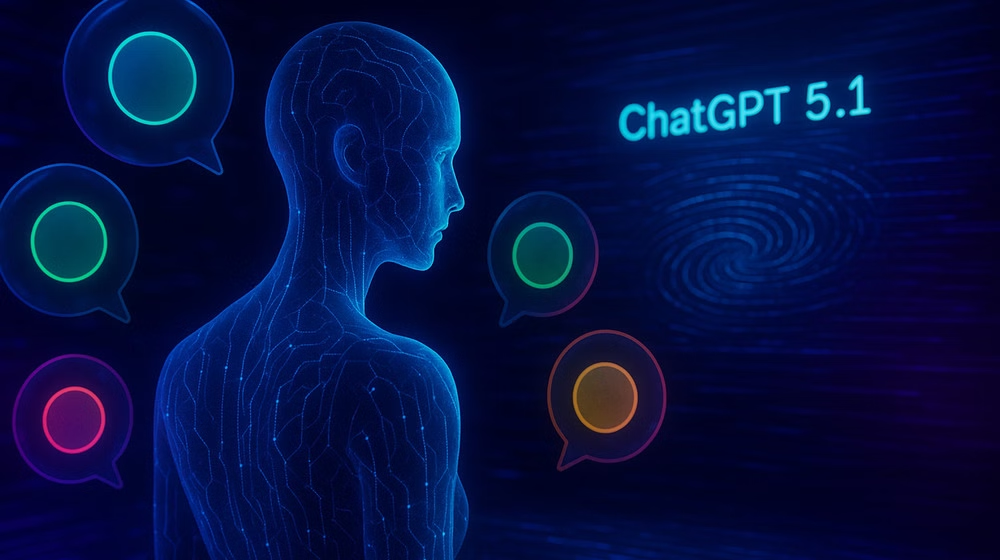A groundbreaking development in artificial intelligence and robotics has captured global attention as a Chinese robotics startup unveils a realistic robot face that moves, blinks, and expresses emotions with uncanny accuracy. The company behind this innovation, AheadForm, claims its new creation, known as the Origin M1, represents a major step toward making robots more lifelike and emotionally intelligent.
AheadForm’s Realistic Robot Face: A Leap Toward Human-Like Machines
The realistic robot face unveiled by AheadForm is capable of subtle facial movements that mimic human expressions. In a recently released demonstration video, the robotic head can be seen blinking, nodding, and shifting its gaze, creating an impression of awareness and natural behavior. The way the robot tilts its head and reacts to stimuli makes it one of the most advanced robotic faces ever produced.
Founded in 2024, AheadForm aims to revolutionize human-robot interaction by blending artificial intelligence with advanced robotics. The company’s mission is to develop expressive robots that can interpret human emotions and respond in a way that feels authentic. According to its official website, AheadForm is focused on merging large language models (LLMs) with robotic systems to make conversations with machines more emotionally engaging and realistic.
The Vision Behind AheadForm’s Innovation
The creation of a realistic robot face goes beyond aesthetics—it represents a vision for the future of social robotics. AheadForm’s researchers believe that emotional expressiveness is key to improving communication between humans and machines. When robots can mirror human emotions through gestures and facial expressions, people may find them easier to trust and interact with.
Dr. Liu, one of the lead engineers at AheadForm, explained that their goal is not just to make robots look human, but to make them “feel” human in how they interact. “We want robots to respond not just to commands, but to emotions—just as another person would,” he said.
How the Realistic Robot Face Works
The Origin M1 prototype uses an intricate combination of motors, sensors, and AI-driven algorithms to mimic the smallest human facial movements. Micro-motors are responsible for the delicate motions of blinking and eyebrow lifting, while artificial skin made from flexible polymers gives the robot a lifelike texture.
Its AI system allows the robot to interpret environmental cues, such as a person’s tone of voice or facial expression, and adjust its own responses accordingly. This capability marks a step closer to achieving robots that can engage in real-time emotional exchanges with humans.
The Potential of Emotionally Intelligent Robots
Experts believe that emotionally expressive robots like AheadForm’s realistic robot face could have significant applications in multiple industries. In healthcare, such robots could serve as companions for elderly patients or individuals with special needs, offering comfort through empathetic interaction. In education, emotionally aware robots could assist teachers by adapting to students’ moods and learning styles.
Similarly, in customer service, human-like robots could provide smoother, more natural interactions, helping businesses enhance user experience. Emotional intelligence in machines, combined with conversational AI, could redefine how people communicate with technology in everyday life.
AheadForm’s Other Robotic Lines
AheadForm has also developed several other robotic designs that build upon its lifelike technology. Its “Elf Series” features stylized robotic heads designed for expressiveness, while the “Lan Series” focuses on cost-effective designs that maintain realistic motion and human-like responsiveness. The company’s engineers are continually refining their technology to make it both scalable and accessible to different sectors.
Global Implications of Realistic Robot Faces
The introduction of a realistic robot face like the Origin M1 raises both excitement and debate in the global tech community. On one hand, it opens possibilities for improving human-robot relationships by making machines appear more relatable. On the other, it introduces ethical and psychological questions about how closely machines should resemble humans.
Experts suggest that this technology could reshape social dynamics, particularly as robots become integrated into daily life. The ability to display empathy, recognize emotions, and simulate understanding could transform the perception of robots from cold, mechanical devices into companions or assistants capable of genuine connection.
The Future of Human-Robot Interaction
The future envisioned by AheadForm is one where robots are not just tools but partners in emotional and social settings. With advancements in artificial intelligence and robotics, the line between human and machine communication continues to blur. The realistic robot face developed by AheadForm represents a milestone in that journey, showing how technology is moving closer to replicating the emotional depth of human interaction.
While many challenges remain—such as improving durability, affordability, and ethical oversight—the innovation signals a future where robots can express, react, and empathize more effectively. As AI models grow more sophisticated, the combination of conversational intelligence and lifelike robotics could redefine what it means to interact with technology.
AheadForm’s realistic robot face marks a new chapter in robotics, blending art, engineering, and artificial intelligence to create machines that move and communicate like humans. The Origin M1 not only showcases the company’s technical brilliance but also reflects the broader shift toward emotionally intelligent technology.
As robotics continues to evolve, emotionally expressive robots may soon become common in homes, hospitals, and workplaces, fundamentally transforming how people connect with machines. AheadForm’s innovation stands as a glimpse into that future—a world where robots can look, listen, and perhaps one day, truly understand.



